The background in a painting is by nature out of the spotlight. But that does not mean it is not important!
In fact, the background has the incredibly important role of providing context and contrast for the main subjects. Remember, painting is all relative. Without a dull background, how would your stunning colors and delicate brushwork stand out?
In this post, I will run through some of the different ways you can paint the background. I will also take a look at how some famous artists handled the background area. I cover:
- What Are the Elements of a Great Background in a Painting?
- What Are Your Options
- Master Artist Examples of Backgrounds (And Why They Work)
- Full Background – Medium Detail
- Full Background – High Detail
- Background in Focus
- Summary
- Want to Learn More?
- Thanks for Reading!

What Are the Elements of a Great Background in a Painting?
In my opinion, a great background in a painting should have two key features:
- It is out of the spotlight (most of the time). This does not mean the background area is bland or uninviting by itself. It just means that the background is not a key feature compared to the rest of the painting (unless the background is the key feature – I give some examples later in the post).
- It should complement the rest of the painting, not detract from it. This means using relevant colors, brushwork and shapes.
What Are Your Options
There are several different types of backgrounds you can use in your painting. Each type will suit different subjects and styles.
No Background
No background is only really suitable for study pieces or if you have a very strong subject which you want to draw complete attention to. In pretty much every other case you would be better off having at least some kind of background to complement the subject, no matter how simple.
Stained Canvas
The stained canvas is similar to having no background, but you have the benefit of at least having some color and texture.
Partial Background
Sometimes a partial background to give some context and contrast is all that is needed. It can produce a very painterly effect and can be highly effective for focusing the subject in a still life or portrait.
Full Background – Simple
A full and simple background will provide context without drawing attention away from the main subject.
Full Background – Detailed
A detailed background can produce stunning results but is difficult to pull off. At best, you will have an intricate painting which has many interesting parts (kind of like a complex puzzle). But at worst, you will have a confusing painting which lacks focus and coherency.
Master Artist Examples of Backgrounds (And Why They Work)
To demonstrate the different types of backgrounds in action, I am using artworks by two wonderful impressionists, Mary Cassatt and Edgar Degas.
Partial Background
In the studies below, Edgar Degas and Mary Cassatt utilized partial backgrounds to provide some kind of contrast for the main subjects. Edgar Degas used regular and rigid lines in the backgrounds to contrast against the more organic and curving lines of the subjects.


In the study below by Mary Cassatt, notice how she used strokes of green to contrast against the vivid red.
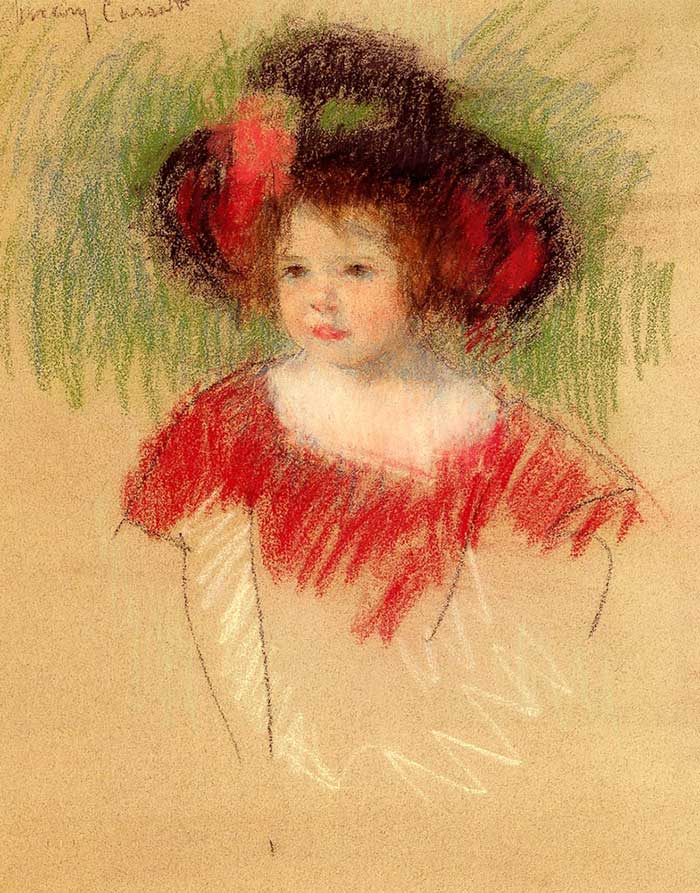
Full Background – Simple
Here are some paintings which have full and simple backgrounds. These backgrounds provide context without drawing attention away from the main subjects.
In the painting below, the background is really nothing more than varied tones of gray and blue. But it plays an important role in framing the subject and providing a dull setting for the subtle skin tones.

If you were to take the three subjects out of the painting below, you would be left with an extremely basic seascape scene. But, as it is merely the background and the three subjects require so much focus, Mary Cassatt was able to simplify the background to nothing more than a few very basic shapes and colors. The simplified background tends to mimic the way we see and focus in life. This is different from the way a camera works (which usually captures everything in focus). As an artist, it is always important to remember the key advantage we have over cameras – we can paint what we actually see and feel, but a camera cannot.

The painting below is a fantastic demonstration of how to paint white and how to bring focus to an incredibly delicate subject. When I look at this painting I find myself helplessly drawn towards the center of the painting, where there is this intricate dance between all the soft colors. The dull background plays an important role here in framing the subject and giving the subject all the attention and contrast it needs.

Below is one of my favorite paintings by Edgar Degas. The subject is actually Mary Cassatt.
There is a brilliant use of the background in this painting to frame the subject’s face. I’m not sure exactly what the chaotic display of whites and yellows in the background is meant to represent, but it does not seem out of place.

Full Background – Medium Detail
Here are some backgrounds which have a medium level of detail.
In the painting below, notice how the darks of the flowers gently blend into the background, whilst the lighter parts of the flowers have a much harder edge. This gives a strong sense of cohesion in the painting as there is this subtle connection between the main subject (the flowers in the vase) and the background (I talk more about linking darks and lights in the Painting Academy).

The background below gives a fantastic sense of scale and perspective. There is enough detail to add context to the scene, but not enough to draw all the attention away from the two subjects. Like the flower painting above, Mary Cassatt again created these subtle links between the background and the main subjects through the use of color and lost edges (I talk about edges in this post).

Full Background – High Detail
These paintings have a high level of detail in the background. Notice how the area of focus is much broader than the other paintings in this post. Also notice how many more small points of interest there are. The longer you look at these paintings, the more you see.


Background in Focus
In most cases, the main subject will be in the foreground or middle ground in perspective, but in some cases, the background is actually the key feature of the painting. This is usually the case in some atmospheric landscapes and seascapes where the sky is the dominant feature. Below are two examples. Notice how the vivid colors draw you towards the background, away from the dull and dark foreground.


Summary
I hope you enjoyed this post and learned something about what to do with the background in your paintings. I trust you now understand, if not already, that the background plays an incredibly important role in your painting and should not be overlooked (unless you are just doing studies). It is really what connects all the elements and sets the stage for your key features.
Want to Learn More?
You might be interested in my Painting Academy course. I’ll walk you through the time-tested fundamentals of painting. It’s perfect for absolute beginner to intermediate painters.
Thanks for Reading!
I appreciate you taking the time to read this post and I hope you found it helpful. Feel free to share it with friends.
Happy painting!
Dan Scott

Draw Paint Academy

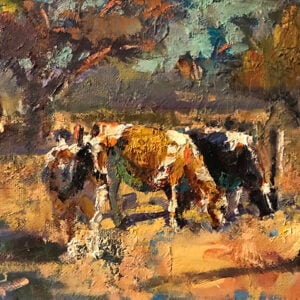
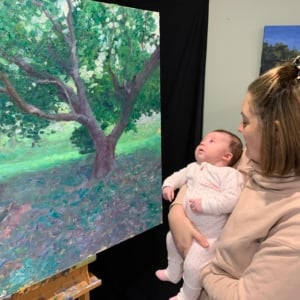
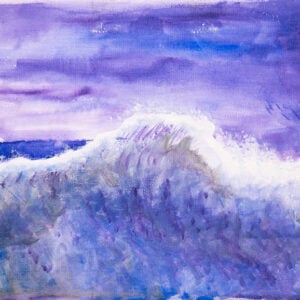
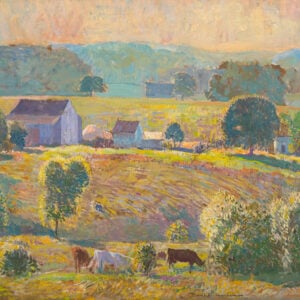

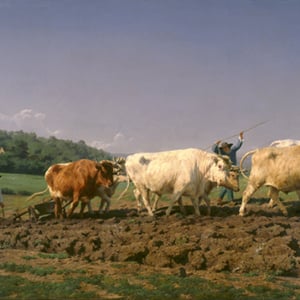
Dear dan, thank you for this acticle, it makes me think that most of my paintings mainly from photos and the backgrounds are far too strong.
I’ m a great fan of Mary Cassett, such gentle, calming pictures. It has been great to read your notes on this subject, I’ve never heard this menioned before. Well done and thank you again. Regards Hazel
Hi Hazel. Yes that can be the problem with painting from photographs. You actually need to think about what the focus is then actively simplify the rest.
Cheers, Dan
This was a subject I have never had touched upon before in art classes. Very informative and helpful, thank you.
Hi Suzanne. The background does not usually get much attention in art classes, but it should! Dan
I am so enjoying your post and wonderful advice. Thank you Dan. I am s complete beginner in painting.
I have really needed this wonderful piece of advice, thank you so much.
Thanks Dan, yet another great article to help us think about what we paint. We all end up developing our own style and approach (and mistakes), but your comments are always helpful, instructive and well received.
Hi John! Thanks for the very kind words. Dan
Thank you for sharing this information. It gives me an idea how important the background in the painting.
No problem Ally! Dan
Great article, about a topic that I am still struggling with; it’s hard to get that slight contrast of value, that allows the focal point to stand out enough. Your clear examples are really helpful too- thank you!
Thanks Judy! Glad to hear. Yes the background can be surprisingly tricky. Dan
Thank you!!!!
Thank you Dan.
This was an eye opener for me. Especially since I mostly paint from photos. I just didn’t think about figuring out the focus in landscapes. Very helpful, thank you!!
Glad to hear Joan! I should also note sometimes in a landscape painting there is no real focus. This seems to be the case with many of Monet’s paintings. Dan
Thanks Dan . nice tips. I love Monet’s paintings.
I am always perplexed when it comes to painting background. Your article is an eye opener for me. Thanks Dan.
I love this info,Mr. Dan.
Do you have books or subscription for tutelage?
Thanks.
This was so helpful, Dan. Thank you very much
I had pretty much laid down my painting brush through the Covid time and have become lazy with no direction. I recently started painting all of the pets in the family. I have always leaned toward animals and it seemed a way to get back into painting.
I read your latest article on doing pet hair and it came at such a great time. I printed and put by my easels.
Questions do come to mind. I painted a white dog on a black canvas on purpose because she would really become the subject without question. I am now doing a multi-colored puppy named Piper and she is on a white canvas. I just began to think I should have started with some type of background. She is Burnt Sienna, Black and White with many spots and mixes. She really started to come together with all of the tips for hair. I now think that I should have given the canvas some type of background to help the dog stand out even more or at least soften the affect. The canvas is 16 x 20; it is a lot of dog. I thought of a soft combination of muted colors that I saw on Backgrounds. Am I trying to put too much together?